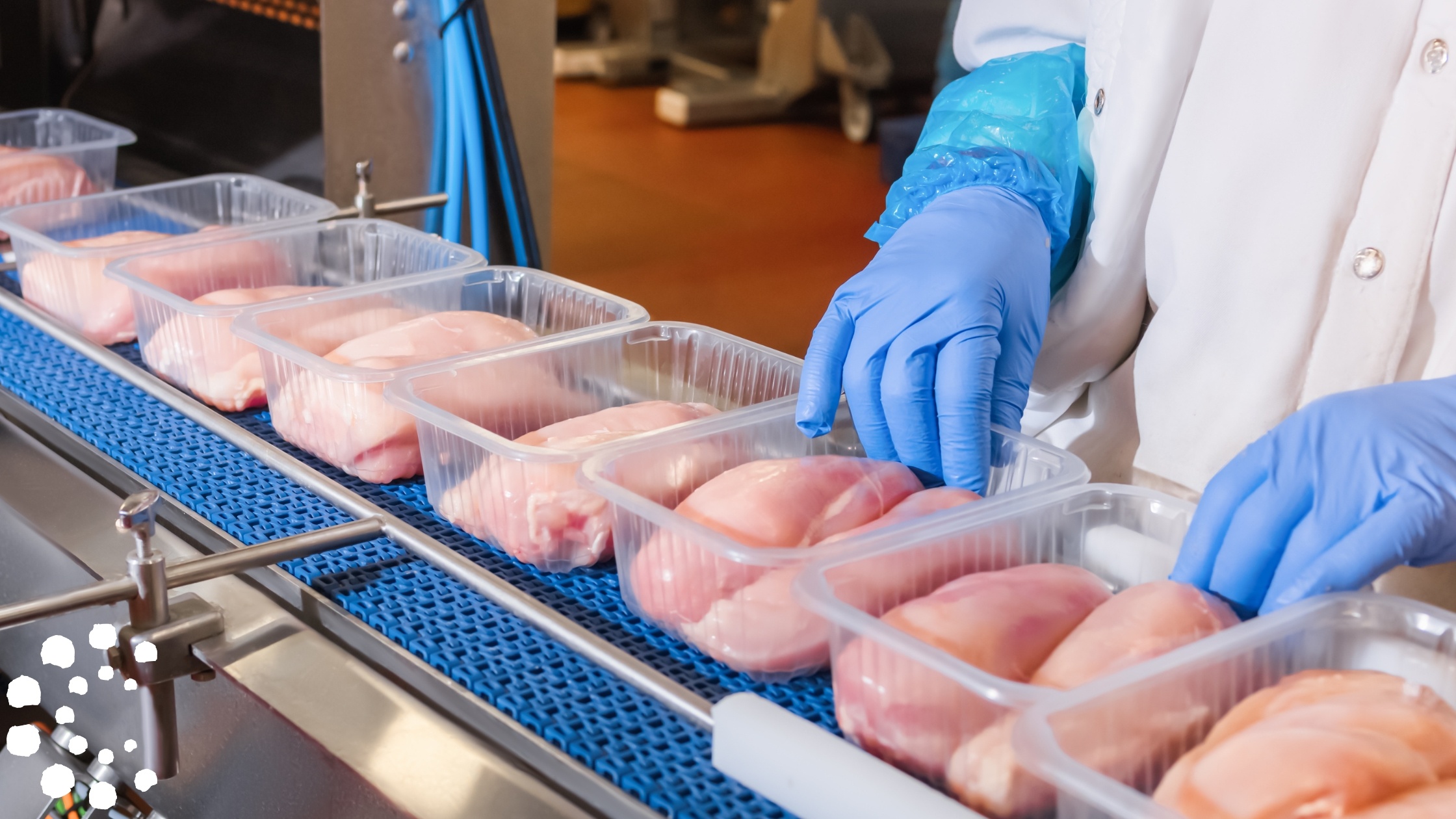How Marketing and Revenue Operations are Transforming Consumer Packaged Goods (CPG) Manufacturing

The Consumer Packaged Goods (CPG) industry is witnessing a transformative shift, with Marketing Operations (MOps) and Revenue Operations (RevOps) at the forefront. These integrated functions are helping manufacturers in the Consumer Packaged Goods (CPG) sector adapt to a rapidly changing landscape by embracing digital transformation, enhancing data-driven decision-making, and pursuing innovative go-to-market strategies. Throughout 2024, manufacturers will increasingly leverage MOps and RevOps to stay competitive, optimize resources, and effectively meet consumer expectations.
Here’s how manufacturers are taking advantage of the power of Marketing and Revenue Operations:
🖥️ 1. Accelerating Digital Transformation
Digital transformation in the Consumer Packaged Goods (CPG) sector is no longer optional—it’s essential for staying relevant. A recent report from Rockwell Automation (2023) found that 44% of CPG leaders are adopting digital tools to enhance product quality and operational efficiency. These digital tools range from automated production lines to predictive maintenance technologies that minimize downtime and maximize productivity.
Furthermore, 57% of manufacturers are automating key processes to address labor shortages and increase performance (Rockwell Automation, 2023). Using MOps and RevOps in digital transformation enables manufacturers to align their technology investments with broader marketing and sales initiatives. This alignment ensures that each investment in digital tools supports the company’s larger goals of efficiency, consistency, and customer satisfaction. By automating repetitive tasks, optimizing workflows, and utilizing advanced software, manufacturers can streamline operations, reduce costs, and focus on innovation.
📊 2. Making Smarter, Data-Driven Decisions
Data is now central to effective decision-making, particularly in the Consumer Packaged Goods (CPG) industry, where manufacturers must adapt to fluctuating consumer preferences and market demands. Leading manufacturers, like those in the Global Lighthouse Network, leverage real-time data to track performance, predict demand, and optimize operations. According to McKinsey (2023), these companies have seen substantial improvements in agility, speed, and product customization, enabling them to rapidly adjust to market changes.
By combining MOps and RevOps, manufacturers gain a comprehensive view of customer data beyond marketing metrics. This integrated data approach helps predict purchasing trends, refine pricing models, and optimize stock levels, ultimately enhancing profitability. For instance, a company might use RevOps to analyze customer lifetime value, allowing them to prioritize high-value customers and tailor marketing campaigns accordingly. This data-driven approach ensures resources are allocated efficiently and that all revenue-generating activities are optimized.
📈 Key Stats:
- 83% of manufacturers report improved decision-making capabilities after implementing data analytics in their operations (Boston Consulting Group, 2023).
- Manufacturers leveraging MOps and RevOps see up to a 30% increase in marketing ROI and a 25% improvement in sales productivity (Forrester Research, 2023).
📦 3. Innovating Beyond the Core
Traditionally, Consumer Packaged Goods (CPG) sector manufacturers have focused heavily on product innovation as a primary growth driver. While 79% of manufacturers still prioritize product innovation (Boston Consulting Group, 2023), companies leading in growth are those exploring new business models and using advanced analytics. Expanding beyond core product offerings into personalized customer experiences, diversified revenue streams, and value-added services allows manufacturers to remain competitive and relevant in an evolving market.
By leveraging data analytics through MOps and RevOps, manufacturers can identify emerging trends and quickly adapt product lines to meet changing consumer needs. Companies that innovate beyond traditional product categories and incorporate new business models, such as subscription services or direct-to-consumer (DTC) channels, are three times more likely to outperform their competitors. This approach demonstrates the power of combining innovation with a strategic operations framework to drive sustainable growth.
📈 Key Stats:
- Manufacturers that diversify into new business models experience 2.5x faster revenue growth than those focused solely on product innovation (Deloitte, 2023).
- 62% of Consumer Packaged Goods (CPG) leaders believe that expanding into digital services will be essential for long-term growth (PwC, 2023).
🔄 4. Improving Cross-Functional Alignment
Marketing and Revenue Operations align marketing, sales, and customer success teams. Manufacturers benefit from this alignment by creating seamless customer journeys, consistent messaging, and improved customer experiences. When MOps and RevOps collaborate, companies see higher customer satisfaction and loyalty as each department works toward shared goals with clear, measurable outcomes.
For example, using RevOps, manufacturers can align marketing and sales around common revenue goals. This alignment helps marketing teams generate high-quality leads and enables sales teams to convert these leads effectively. Meanwhile, customer success teams can use these insights to tailor their engagement strategies, leading to longer customer lifecycles and higher lifetime value. Research shows that companies with cross-functional solid alignment achieve 24% faster growth rates and report 31% higher customer satisfaction (Forbes, 2023).
💼 5. Enabling Predictable, Scalable Growth
With a consistent strategy and cross-functional alignment, Marketing and Revenue Operations provide manufacturers with a predictable growth path. RevOps improves forecasting accuracy by tracking revenue data across channels, helping companies allocate budgets strategically and maximize ROI. MOps, on the other hand, brings scalability by standardizing processes, making it easier for companies to adapt to increased demand or expand into new markets without sacrificing efficiency.
Predictable Consumer Packaged Goods (CPG) manufacturing growth means having the right products in stock at the right time for the right audience. MOps and RevOps help make this possible by ensuring that every revenue-driving activity—from product launches to promotions—is supported by data-driven insights, optimized resources, and aligned goals.
📈 Key Stats:
- Companies with strong DevOps frameworks report a 26% increase in forecast accuracy, which enables them to allocate resources more effectively and drive profitability (Gartner, 2024).
- 35% of Consumer Packaged Goods (CPG) leaders state that cross-functional operations were essential in scaling their businesses (Harvard Business Review, 2023).
💡 Conclusion
Embracing Marketing and Revenue Operations for Success in Consumer Packaged Goods (CPG) Manufacturing
The Consumer Packaged Goods (CPG) manufacturing industry is evolving, and companies that embrace Marketing and Revenue Operations are set to lead this transformation. Manufacturers can stay agile and competitive by integrating digital tools, using data to make smarter decisions, expanding beyond core offerings, and ensuring cross-functional alignment. MOps and RevOps provide the foundation for growth, efficiency, and resilience in a rapidly changing market.
Now is the time to transform your manufacturing business! Want to learn more about how these strategies can work for you? Contact Curao Marketing & Business Consulting today to discover how Marketing and Revenue Operations can drive growth and innovation for your company.
References
- Rockwell Automation. (2023). State of the CPG Industry: Digital Transformation and Operational Efficiency. Rockwell Automation. Retrieved from https://www.rockwellautomation.com
- McKinsey & Company. (2023). The Global Lighthouse Network: Lessons from Advanced Manufacturing Leaders. McKinsey & Company. Retrieved from https://www.mckinsey.com
- Boston Consulting Group. (2023). Driving Innovation in the CPG Sector. BCG. Retrieved from https://www.bcg.com
- Forrester Research. (2023). Marketing Operations and Revenue Optimization. Forrester Research. Retrieved from https://www.forrester.com
- Deloitte. (2023). New Business Models in CPG: Leveraging Diversification for Growth. Deloitte Insights. Retrieved from https://www.deloitte.com
- PwC. (2023). CPG Outlook 2023: Digital Services and Long-Term Growth. PwC. Retrieved from https://www.pwc.com
- Forbes. (2023). The Power of Cross-Functional Alignment in Business Growth. Forbes. Retrieved from https://www.forbes.com
- Gartner. (2024). Revenue Operations in CPG Manufacturing. Gartner Research. Retrieved from https://www.gartner.com
- Harvard Business Review. (2023). Scaling CPG Companies Through Cross-Functional Operations. Harvard Business Review. Retrieved from https://www.hbr.org




